 Image search results - "ii" Image search results - "ii" |
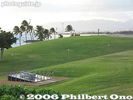
Ehime Maru Memorial in Kakaako Waterfront Park, Honolulu えひめ丸慰霊之碑The memorial is on a slope with a good view of the ocean. It was indeed a suitable place for such a memorial.
|
|

Yasukuni Shrine is Japan's most prominent shrine for the war dead. Near Kudanshita Station on the Tozai Subway Line. This is the first giant torii
|
|
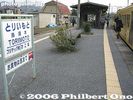
Toriimoto-juku is the sixty-third of the sixty-nine stations or shukuba post towns on the Nakasendo Road. It is the fourth Nakasendo station in Shiga (following Bamba-juku in Maibara), and one of ten Nakasendo stations in Shiga.
|
|
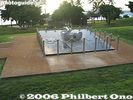
The memorial was unveiled on Feb. 9, 2002, a year after the accident.
|
|
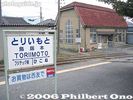
Although the Honjin is long gone, there are a few reminders of its shukuba past. Near Ohmi Railways Toriimoto Station. Map
|
|
|
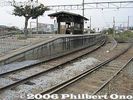
Ohmi Railways Toriimoto Station platform
|
|
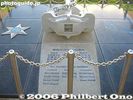
On Feb. 9, 2001, a small Japanese fisheries training boat from Uwajima, Ehime Prefecture was struck by the USS Greeneville submarine as it bolted to the surface off the coast of Honolulu, Hawaii. Nine Japanese high school students, teachers, and crewmen died aboard the Ehime Maru. A year later, a waterfront memorial was built in Honolulu.
|
|

Ohmi Railways Toriimoto Station building
|
|

Names of the nine Japanese who died
|
|

Ohmi Railways Toriimoto Station building
|
|

Inscription in English
|
|

Second torii
|
|

Entrance to garden via Tokiwa Shrine. One of Japan's three most famous gardens, Kairakuen is especially noted for thousands of plum blossom trees which bloom in Feb. and March.One of Japan's three most famous gardens, Kairakuen is especially noted for thousands of plum blossom trees which bloom in Feb. and March.
|
|
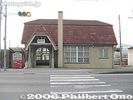
Toriimoto Station building built in 1931 when the station opened and still in use.
|
|
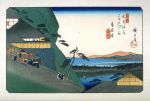
Hiroshige's woodblock print of Toriimoto (64th post town on the Nakasendo) from his Kisokaido series.
|
|

Inscription in Japanese
|
|

Toriimoto-juku is the sixty-third of the sixty-nine stations or shukuba post towns on the Nakasendo Road. It is the fourth Nakasendo station in Shiga (following Bamba-juku in Maibara), and one of ten Nakasendo stations in Shiga.
|
|
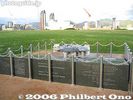
I hope the former submarine commander Scott Waddle comes here on each anniversary of the accident and pray for their souls.
|
|
|

Back view of second torii
|
|

Site of Honjin Lodge
|
|
|

From Tokyo, Gala Yuzawa is the most convenient place to ski. The Joetsu shinkansen can take you there in little over an hour and the train station has the ski gondola. An easy day trip.
|
|

Entrance to Iimoriyama Hill, site of the Byakkotai "White Tiger" Battalion gravesite. In 1868, a unit of teenage warriors called Byakkotai (White Tiger Battalion) fought against the Emperor-backed Imperial forces encroaching their domain of Aizu
|
|

Nagahama Hachimangu Shrine torii on New Year's Day. Nagahama's most popular shrine for New Year's worship (hatsumode). MAP
|
|

June 9, 2007. Hula dancers rush to Pukari Sanbashi Pier where the Hokule'a canoe is to dock. ぷかりさん橋
|
|

Oarai Isosaki Shrine's giant torii
|
|

Toki Messe's tower is the city's tallest building at 140 meters.
|
|
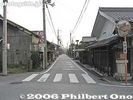
Nakasendo Road
|
|

JR Niigata Station 新潟駅
|
|

Front of Yoshida Chiaki's home in Niigata (formerly Niitsu) which I visited in Nov. 2007. Yoshida Chiaki composed a song called "Hitsuji-gusa" (Water Lilies) whose melody was used for the song "Biwako Shuko no Uta" (Lake Biwa Rowi
|
|

Lake Hyoko (Lake Hyo), a man-made lake where thousands of swans and ducks migrate to during the winter months.
|
|

Former Hatano residence and birth home of Yoshida Togo 旧旗野邸 (吉田東伍生家)
|
|
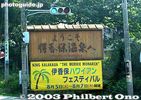
Ikaho is also a sister city of Hawaii island. During Aug. 5-7, 2003, Ikaho hosted the 7th King Kalakaua Merrie Monarch Hawaiian Festival featuring hula performances by numerous Japanese hula groups.
|
|
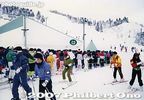
The line gets very long during the morning, so I usually go later in the day and ski until night when it is much less crowded. I catch the last shinkansen back to Tokyo.
|
|

The Byakkotai were outnumbered and forced to retreat. Twenty of them escaped to Iimoriyama Hill where they saw what looked liked a burning Tsurugajo Castle. Photo: Pay a small fee to take the escalator up the hill. Or climb up the steps for free.
|
|

A crowd of a few hundred on hand to greet Hokule'a's arrival.
|
|

Oarai Isosaki Shrine's giant torii
|
|
|

Toki Messe is a multipurpose complex which includes a convention center, exhibition hall, hotel and office tower (the city's tallest building), art museum, and an observation deck on the 31st floor.
|
|

Niigata Station
|
|
|
|

Rear view of birth home of Yoshida Togo who was a famous geographer of Japan who compiled an encylopedia of Japanese place names. His son was Yoshida Chiaki who composed the melody of the song "Biwako Shuko no Uta" (Lake Biwa Rowing Song).
|
|

In the evenings, Hawaii's top hula halau (winner of the Merrie Monarch Festival in Hawaii) performed as the festival's main event. Photo: Flags of Hawaii and Ikaho town (merged with Shibukawa in 2006).
|
|

It's not a large or long run, but better than nothing.
|
|

In despair, the boys decided to kill themselves rather than die in the hands of the enemy. Photo: Escalator to go up Iimoriyama Hill.
|
|

Path to shrine with stone lanterns, and cars.
|
|

People crowd the waterfront near Pukari Sanbashi Pier.
|
|

Oarai town
|
|

The observation deck is about 125 meters above the ground. The tallest building along the Sea of Japan coast. Fine view of Shinano River.
|
|
|
|

Road in front of Niigata Station
|
|

Front gate of Yoshida Chiaki's home
|
|

Duck feeding
|
|

A room in the birth home of Yoshida Togo
|
|

Entering Tagata Shrine, dedicated to Tamahime-no-Mikoto (daughter of a local feudal lord) and Mitoshi-no-Kami (deity of harvests).
|
|
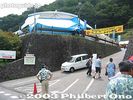
Town parking lot with a makeshift stage and main venue of the festival. The "Merrie Monarch" refers to King David Kalakaua who reigned over the Hawaiian Kingdom 1874-1891. He promoted hula in Hawaii as well as Japanese immigration to Hawaii.
|
|

The quality of the snow is not as good as in Hokkaido, but better than nothing.
|
|

Escalator to go up Iimoriyama Hill. Their tombstones are on this hill near where they killed themselves. Their story has become legend.
|
|

Stone lanterns
|
|

People crowd the waterfront near Pukari Sanbashi Pier.
|
|

Oarai Isosaki Shrine torii at sea
|
|

On Bandai-bashi Bridge
|
|

In the foreground is Bandaibashi Bridge, spanning Shinano River.
|
|
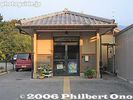
Police station
|
|

Inner garden. I met Yoshida Yuki (吉田ゆき), the niece of Yoshida Chiaki who showed me the house and a few materials. Flowers planted by Chiaki still grow in the garden.
|
|
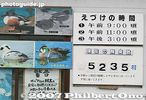
Duck species in the lake and the number of birds so far.
|
|

Garden of the birth home of Yoshida Togo
|
|
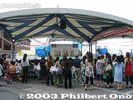
Canopy for the spectators fronting the main outdoor stage.
|
|
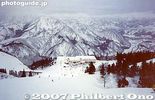
View from the top.
|
|

Byakkotai Gravesite. It is on a flat area which also has several other Byakkotai monuments including those from other countries.
|
|
|

Hokule'a already in sight well before 11 am when it was scheduled to dock.
|
|

Oarai Isosaki Shrine torii at sea
|
|

Bandai-bashi Bridge. The tall building is Toki Messe.
|
|
|
|

Yoshida Chiaki's room on the 2nd floor.
|
|

In Oct. 2008, Lake Hyoko was added to the list of wetlands of international importance under the Ramsar Convention on Wetlands.
|
|

Entrance to the Yoshida Togo Memorial Museum which exhibits various documents and personal effects of Yoshida Togo. Museum admission 300 yen. Closed Mon.
|
|
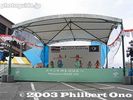
Main stage where many Japanese hula troupes performed during the day for three days. Free admission.
|
|
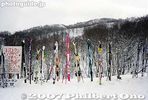
Skis left outside as their owners have lunch. It's nice that no one steals your skis.
|
|

Yasukuni Shrine, Torii and Haiden hall
|
|

Approach to the Byakkotai gravesite.
|
|

The shrine grounds was filled with cars on New Year's Day. Apparently, the shrine has no parking lot.
|
|

Hokule'a and escort ship Kama Hele. What makes this canoe so special and famous is that it was used to sail from Hawaii to Tahiti (and many other places) without any modern navigational instruments.
|
|

Oarai Isosaki Shrine torii at sea
|
|

Sakana-no-Furusato Bandaijima Fish market near Toki Messe. さかなのふるさと万代島
|
|
|
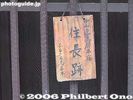
Plaque
|
|

Yoshida Chiaki's room on the 2nd floor. This is where he spent his final days while stricken with tuberculosis.
|
|

Thousands of ducks
|
|

Inside Yoshida Togo Memorial Museum. The 2nd floor also has a display panel about his son Yoshida Chiaki who composed the song "Hitsuji-gusa" whose melody was used in the song "Biwako Shuko no Uta" (Lake Biwa Rowing Song).
|
|
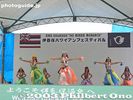
Tahitian dances were also performed.
|
|
|
|

Another entrance to the shrine
|
|

Hachimangu Shrine torii
|
|

They only referred to the sun, moon, the stars, and ocean waves to navigate through the vast Pacific Ocean or Polynesia. This is called celestial navigation. Extremely few people can do this, and the Hawaiians are learning this skill of long-ago.
|
|

Torii at sea
|
|

Crab
|
|

Too hazy to see Sado island.
|
|
|

View from Yoshida Chiaki's room on the 2nd floor. Sometimes they receive local school children for tours of the house.
|
|
|
|
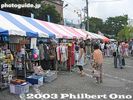
Hawaiian souvenirs for sale.
|
|
|
|

Graves of the 19 teenage Byakkotai warriors who killed themselves with their own swords.
|
|
|

Hachimangu Shrine torii
|
|

They wanted to prove that the original native Hawaiians were able to sail between Tahiti to Hawaii on purpose, and that they did not land on Hawaii by accident.
|
|

Shoreline
|
|

Crab
|
|

Toward the mouth of Shinano River.
|
|
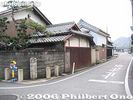
Road marker
|
|

Stairs from Yoshida Chiaki's room on the 2nd floor.
|
|
|
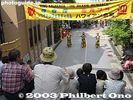
Ikaho is famous for the Stone Steps lined with shops. A section of it also served as a second hula stage during the day.
|
|

Byakkotai Graves
|
|
|

Hachimangu Shrine
|
|

Hokule'a and Yokohama Bay Bridge in the background.
|
|

Isosaki Shrine torii as seen from the beach
|
|
|
|
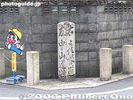
Road marker: Go left for the Nakasendo Road or right for the Hikone Road.
|
|

Original copy of the magazine "Ongaku-kai" (The Musical Japan) where Yoshida Chiaki's song "Hitsuji-gusa" was first published and made popular. Issued in Aug. 1915. 音楽界
|
|

Whooping swans mix with the ducks.
|
|

Torii gate to Kumano-sha Shrine.
|
|

Hula on the Stone Steps 石段街
|
|

Byakkotai Graves
|
|

Haiden hall 拝殿
|
|

Hachimangu Shrine. Do not climb on the horse.
|
|

One sail unraveled.
|
|

Isosaki Shrine's second giant torii
|
|

Salmon
|
|

Ferry to Sado island.
|
|
|

Table of Contents of magazine "Ongaku-kai" (The Musical Japan) 音楽界. Many music-related articles.
|
|

Swan
|
|
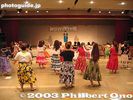
Hula workshops are also offered during the day at cost. A famous kumu hula teacher from Hawaii teaches the class.
|
|

Byakkotai gravestones. Each one shows the name, age, and method of death called "jijin" (died with one's own sword 自刃).
|
|

Ice sculpture of two rats. 2008 is the year of the rat.
|
|

Shakujii-Koen Station on the Seibu Ikebukuro Line. 石神井公園駅
|
|

Cherry blossoms along the Shakujii River, near Shin-Itabashi Station on the Mita subway line.
|
|

Sanno torii gate and the West entrance. Escalator on the right. This torii style is unique to Hie Shrines. The shrine is nearest to Tameike-Sanno Station on the Ginza and Nanboku subway lines. 山王鳥居
|
|

Nearing Pukari Sanbashi Pier. The question was, which side of the pier would it dock? (Was going the other side so I rushed over to the other side.)
|
|

This is early in the morning when the 54 portable shrines who had gathered in front of the shrine depart for the procession one after another.
|
|

Isosaki Shrine torii
|
|
|
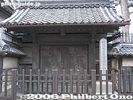
Yakuimon Gate at the Arikawa machiya home. Emperor Meiji rested at the Arikawa home. A family still lives in this home. 有川家住宅 薬医門
|
|

On the first page is Yoshida Chiaki's song "Hitsuji-gusa" (Water Lilies) which was acclaimed enough to be published here.
|
|
|

Other workshops are held such as ukulele lessons and a lei-making class.
|
|
|
|
|

Road to Shakujii Park.
|
|

There are cherries on both sides of the river and a walking path on both sides.
|
|

Sanno torii gate 山王鳥居
|
|

Hokule'a nears the dock.
|
|

Isosaki Shrine torii
|
|
|
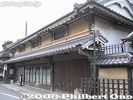
Main building of the Arikawa home, Toriimoto's most distinguished-looking building. This main building was built in 1759. The Arikawa family were a drug manufacturer. The home was designated as an Important Cultural Property in 2012.
|
|

Oagata Shrine torii
|
|

On the first page is Yoshida Chiaki's song "Hitsuji-gusa" (Water Lilies). Although the melody is different, the lyrics are a direct translation of a childen's song called Water Lilies written by E.R.B. in the UK.
|
|
|
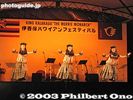
In the evenings, the overall winner of the annual Merrie Monarch Festival in Hawaii performed on stage. In 2003, it was Hula Halau 'O Kamuela from Oahu. They performed both the ancient hula kahiko dances (pictured here) and modern auana dances in Ikah
|
|

This has become a national shrine, almost as important as Sengakuji where the 47 masterless samurai are buried.
|
|

Honden Hall 本殿
|
|

Ontake Jinja 御嶽神社
|
|

Nezu Shrine torii gate 根津神社
|
|

One end of Shakujii Park.
|
|

Entrance to one walking path with a poem monument.
|
|

Sanno torii gate 山王鳥居
|
|

A rope is thrown to the dock from Hokule'a.
|
|

Isosaki Shrine
|
|

Fishing boats
|
|
|

Small book titled "A Garland of Flower-Poems" published in Japan. This was owned by Yoshida Chiaki and it includes the UK song "Water Lilies."
|
|
|
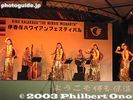
The Ikaho hula festival is officially sanctioned by The Merrie Monarch Festival, held in spring in Hilo, Hawaii. It is the most important and prestigious hula competition.
|
|
|

New Year's prayers amid snow.
|
|

Nezu Shrine torii gate 根津神社
|
|

Shakujii Pond 石神井池
|
|
|

Hokule'a arrives right on schedule at 11 am on June 9, 2007. Yokohama is its last stop.
|
|

Giant votive tablet (2006 is the year of the dog)
|
|
|

Page where "Water Lilies" is printed in the book. It is very likely that Chiaki found the song in this book, and decided to make his Japanese version. His signature is on the back of the book.
|
|

They all face the same direction. Group oriented.
|
|
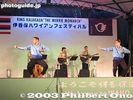
Hula is also performed by men. These photos were taken during the 7th Ikaho Hawaiian Festival (Aug. 5-7, 2003).
|
|
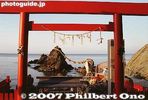
Futami Okitama Shrine does not have a main hall (Honden) like most other shrines. It worships the Okitama Sacred Stone in the ocean beyond the Wedded Rocks. 二見興玉神社
|
|
|

Buying omikuji fortune paper
|
|

Swan boats on Shakujii Pond. 石神井公園
|
|
|

Hula dancers
|
|

Shrine
|
|
|
|
|
|
|

Shrine souvenirs
|
|
|

Cherry tree shadow
|
|

Conch shell blowers signal the canoe's arrival.
|
|

Koma-inu lion dog and lanterns
|
|

Central Niigata
|
|

Quack, quack. Actually the ducks were pretty quiet.
|
|
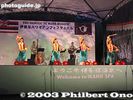
They wore a variety of colorful costumes and used various hula instruments such as these frayed bamboo sticks called Pūʻili.
|
|

On the right side are more gravestones. These are 31 Byakkotai members who died in battle. 戦死
|
|

Votive tablet
|
|
|

River wall
|
|

Pulling Hawaii's most famous canoe to dock.
|
|

Boat museum within the shrine grounds
|
|

Another torii
|
|

Tourist info booth sells duck feed
|
|
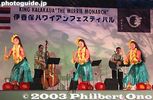
Modern hula dances such as this one is mainly for tourist entertainment.
|
|

Tombs of those Byakkotai who died in action.
|
|
|

Shakujii Pond 石神井池
|
|

Shakujii River sprinkled with fallen petals.
|
|

Under overcast skies, Hokule'a docks.
|
|

Path from shrine
|
|
|
|

Map of lake area
|
|
|

Tombs of those Byakkotai who died in action.
|
|
|
|
|

Pleasant walking path.
|
|
|

Pedestrian overpass with swan motif.
|
|
|

Their names, age, and "senshi" 戦死 (died in battle) are engraved on the stones.
|
|

Torii to Benzaiten Shrine
|
|
|
|
|

Escort ship (powered by a Yanmar engine) Kama Hele also docks soon afterward.
|
|
|

YouTube video of the song Hitsuji-gusa (Water Lilies) by a choir called Koai Gassho no Kai (小合合唱の会) performing at a memorial gathering on the anniversary of Chiaki’s death in Feb. 2013 at Chiaki’s birth home.Video uploaded by Ichii Yasuzo in Niigata.
|
|
|

Benzaiten Shrine
|
|
|

Torii
|
|
|

Koinobori carp streamers adorn Hokule'a. A great Japanese touch.
|
|

After the bamboo sticks, the girls used a gourd drum called ipu.
|
|
| 1979 files on 8 page(s) |
1 |
 |
 |
 |
 |
|